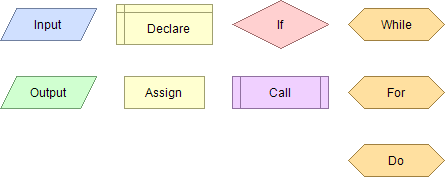| Flowgorithm | |
|---|---|
| | |
 | |
| Paradigm | Structured, imperative |
| Designed by | Devin Cook |
| First appeared | 2014 |
| Stable release | 4.5.0 / October 8, 2024 |
| Typing discipline | Static, strong, safe |
| Implementation language | C# |
| OS | Windows |
| License | Freeware |
| Filename extensions | .fprg |
| Website | flowgorithm |
| Influenced by | |
| Flowcharts | |
Flowgorithm is a graphical authoring tool which allows users to write and execute programs using flowcharts. The approach is designed to emphasize the algorithm rather than the syntax of a specific programming language. [1] The flowchart can be converted to several major programming languages. Flowgorithm was created at Sacramento State University. [2]

